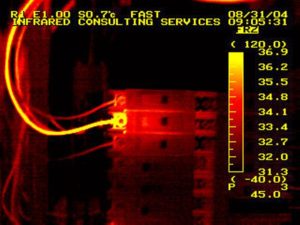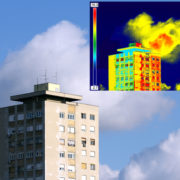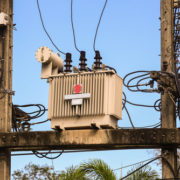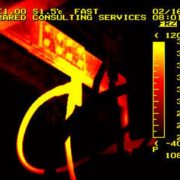How Can an Infrared Inspection Help You Fix Electrical Issues?

An infrared inspection identifies potential problems.

An infrared inspection can prevent problems.
How familiar are you with electrical thermography? It is an invaluable tool for those any commercial facility, as it easily detects issues with your equipment through careful temperature readings and enables you to create a plan of action should any signs of malfunction be found. You may be wondering just how this could be true. In this blog, we’ll be going over just how infrared inspection works and how it can be used to save you valuable equipment, time and money. There are a number of different equipment types that electrical thermography can detect problems with, including:
Transformers
One of the ways in which infrared inspection equipment can be used is for the transformers in your facility. Transformers are important to your facility’s operation and equipment, as without it your equipment wouldn’t be able to function whatsoever—yet most facility managers neglect to have the transformers in their facility properly inspected by a professional thermographer. When an infrared inspection is performed on your transformer, the inspector’s device will measure the amount of heat coming from the transformer’s cooling tubes. Problems may be developing with the transformer if any of the tubes are disparate in temperature from the rest. Normally there will be an even amount of heat flowing between them all.
Fuses
A broken fuse can display problems in one of two ways—both of which can only be detected through electrical thermography. A fuse that has completely blown will have gone cold. Meanwhile, a fuse that is on the verge of blowing will appear much warmer than usual. This is a sign that the fuse cannot handle much more energy and investigated
Wires
Electrical problems can occur most frequently and easily in your facility’s wiring. A certified thermographer will be able to detect issues with the wiring with little trouble, as the major warning sign for faulty wiring is excessive heat. During the electrical testing process, the inspector will most likely compare the faulty wire to other wires connected to similar machinery. This type of discovery can signal any number of problems. Regardless of the root of the problem, having electrical testing performed allows you to take quick action to solve the issue before it escalates.
MCC (or Motor Control Centers)
The different sections of an MCC may denote trouble, which could mean problems for your facility and its equipment. A thermographic inspector will be able to inspect each part of the MCC for any potential problems, which will display similar symptoms to the many others we described above.
Overall, the way infrared inspection works is very simple on the surface, but the positive effects are numerous. To learn more about how electrical thermography can help your facility, contact us!









 By detecting problems before they occur and by pin-pointing exactly where problems might exist, Infrared Thermographic Testing has many benefits.
By detecting problems before they occur and by pin-pointing exactly where problems might exist, Infrared Thermographic Testing has many benefits.
 Learn more about our wide range of non-invasive, non-destructive inspection & testing services and if they are right for your needs.
Learn more about our wide range of non-invasive, non-destructive inspection & testing services and if they are right for your needs.
 Founded in 1988, Infrared Consulting Services (ICS) provides professional infrared electrical, NDT and building envelope inspection services nationwide.
Founded in 1988, Infrared Consulting Services (ICS) provides professional infrared electrical, NDT and building envelope inspection services nationwide.
